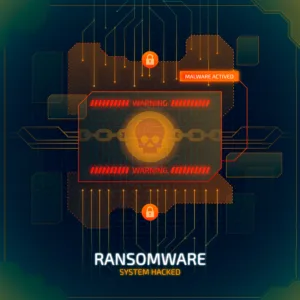
Table of Contents
Introduction
In the fast-paced realm of cybersecurity, staying ahead of threats while managing costs is a perpetual challenge. As we step into 2024, organizations face an ever-expanding array of cyber threats, ranging from sophisticated ransomware attacks to stealthy data breaches.
In this landscape, Chief Information Security Officers (CISOs) play a pivotal role in safeguarding their organization’s digital assets while optimizing costs. This guide explores strategies for navigating cost optimization in cybersecurity.
Understanding the Cybersecurity Landscape in 2024
The year 2024 brings forth a cybersecurity landscape characterized by increasing complexity and sophistication of threats. Cybercriminals leverage advanced tactics such as artificial intelligence (AI) and machine learning (ML) to orchestrate targeted attacks, exploiting vulnerabilities in networks, applications, and human behavior.
Moreover, the proliferation of Internet of Things (IoT) devices and the adoption of cloud services expand the attack surface, presenting new challenges for security professionals.
Amidst these challenges, organizations must contend with regulatory compliance requirements such as DPDP, GDPR, CCPA, and emerging data protection laws. Non-compliance not only exposes organizations to legal liabilities but also tarnishes their reputation in an age where data privacy is paramount.
Cost Optimization in Cybersecurity
1. Risk-Based Approach:
A risk-based approach forms the cornerstone of effective cost optimization in cybersecurity. CISOs should conduct comprehensive risk assessments to identify and prioritize threats based on their potential impact and likelihood of occurrence.
By focusing resources on mitigating high-impact risks while accepting or transferring lower-priority risks, organizations can optimize their cybersecurity investments.
2. Embrace Cloud Security Solutions:
The adoption of cloud-based security solutions offers numerous benefits, including scalability, agility, and cost-effectiveness. Cloud platforms provide robust security features such as encryption, identity and access management (IAM), and threat detection, eliminating the need for extensive on-premises infrastructure.
Moreover, cloud services enable organizations to pay only for the resources they consume, optimizing costs while enhancing security posture.
3. Implement Automation and Orchestration:
Automation and orchestration play a crucial role in streamlining security operations and reducing manual overhead. By automating routine tasks such as patch management, vulnerability scanning, and incident response, organizations can improve efficiency and reduce human error.
Furthermore, orchestration enables seamless integration between disparate security tools and systems, enhancing visibility and control across the cybersecurity landscape.
4. Adopt Zero Trust Architecture (ZTA):
Zero Trust Architecture (ZTA) is gaining traction as a paradigm shift in cybersecurity, emphasizing the principle of “never trust, always verify.” By implementing strict access controls, continuous authentication, and micro-segmentation, organizations can minimize the risk of lateral movement by cyber adversaries.
ZTA enables organizations to optimize costs by focusing security investments on protecting critical assets and data, rather than relying solely on perimeter defenses.
5. Leverage Threat Intelligence:
Access to timely and relevant threat intelligence is essential for proactive threat detection and response. CISOs should invest in threat intelligence platforms that provide actionable insights into emerging threats, vulnerabilities, and adversary tactics.
By leveraging threat intelligence feeds, organizations can prioritize security measures based on real-time threat data, optimizing resource allocation and reducing the impact of cyber incidents.
6. Promote Cybersecurity Awareness:
Human error remains a significant contributing factor to security breaches, underscoring the importance of cybersecurity awareness training for employees. CISOs should implement comprehensive training programs that educate employees about common threats such as phishing, social engineering, and malware.
By fostering a culture of security awareness, organizations can empower employees to become the first line of defense against cyber threats, thereby reducing the likelihood of successful attacks.
7. Explore Managed Security Services:
In some cases, outsourcing certain security functions to managed security service providers (MSSPs) can offer cost-effective solutions without compromising on security efficacy. MSSPs provide specialized expertise, advanced technologies, and round-the-clock monitoring and response capabilities, allowing organizations to augment their internal security capabilities while optimizing costs.
Additionally, MSSPs can offer predictable pricing models, enabling organizations to better manage their cybersecurity budgets.
Conclusion – Cost Optimization in Cybersecurity
As organizations navigate the complex and evolving cybersecurity landscape in 2024, cost optimization remains a critical imperative. By adopting a risk-based approach, embracing cloud security solutions, implementing automation and orchestration, adopting Zero Trust Architecture, leveraging threat intelligence, promoting cybersecurity awareness, and exploring managed security services, CISOs can effectively safeguard their organizations against cyber threats while optimizing costs.
By integrating these strategies into their cybersecurity framework, organizations can achieve a balance between security efficacy and cost efficiency in the face of evolving cyber threats.
Read more on https://cybertechworld.co.in for insightful cybersecurity related content.




















Can you be more specific about the content of your article? After reading it, I still have some doubts. Hope you can help me.
Can you be more specific about the content of your article? After reading it, I still have some doubts. Hope you can help me.